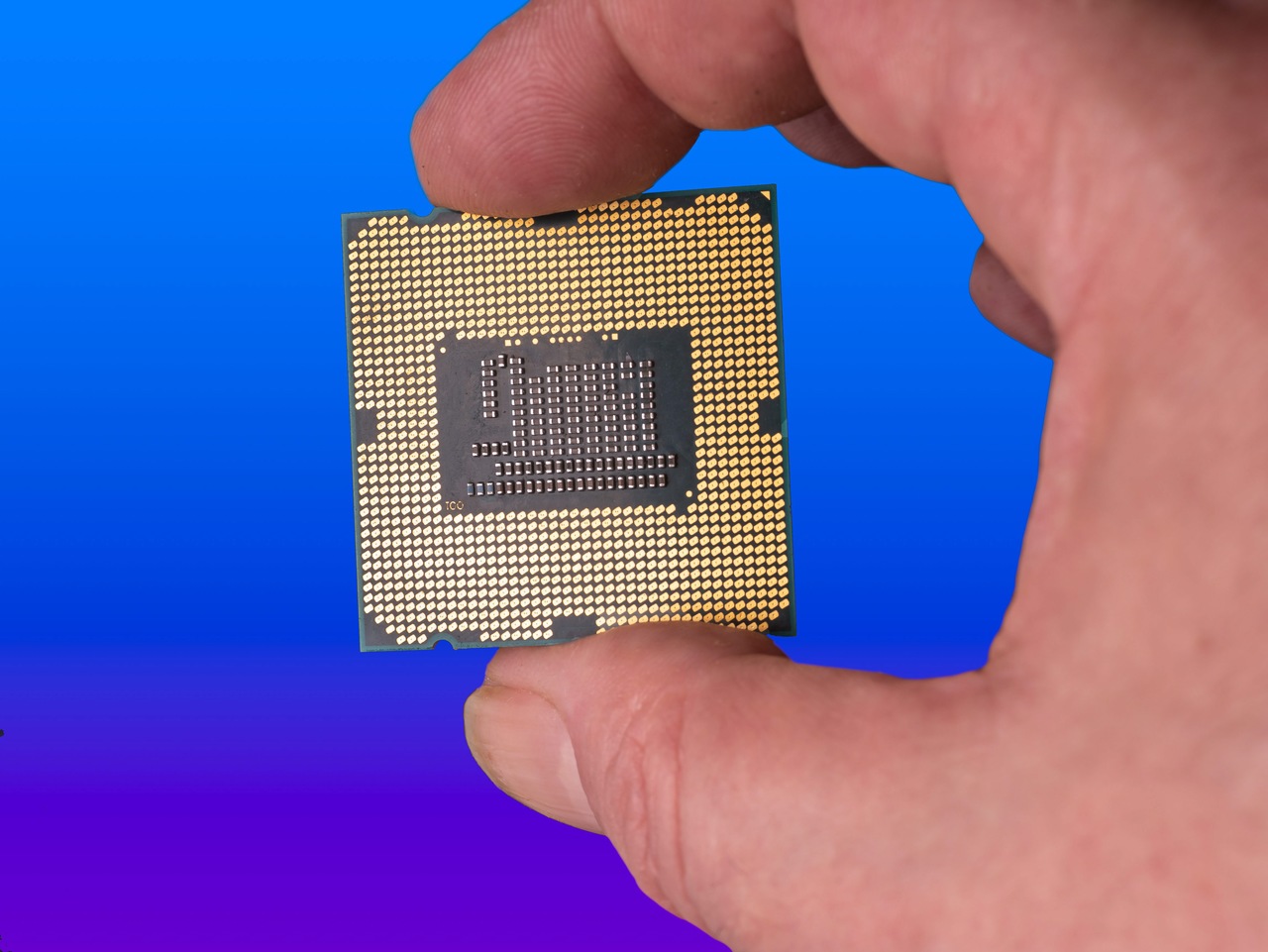Microchips and Semiconductors: The U.S. Seeks Autonomy
The United States has turned to support of the domestic microchip industry in response to the increased risk of Chinese aggression against Taiwan, one of the leading producers, as well as to address disruptions in supply chains caused by the COVID-19 pandemic. A law on this passed with bipartisan consent and is intended to help finance a more resilient American sector towards global changes in manufacturing these components. Thanks to the CHIPS Act, the U.S. can reduce its dependence on microchip imports and undermine China’s ability to dominate the market.
 Chromorange / Vario Images / Forum
Chromorange / Vario Images / Forum
Microchips, which are made of semiconductors (including germanium and silicon) through the use of noble gases (aerogens) in the manufacturing process, are a component of numerous products of modern industry. They are incorporated into electronic devices, vehicles, payment cards, and weapons. The sector, with an estimated value of $600 billion, is not diversified , unlike industries such as oil and food production, and is concentrated in just a few countries. Although the technology of microchip production was developed in the U.S. and 85% of new advancements in manufacturing come from there, American companies account for only about 13 % of global production. The main producers are in Taiwan (20%), South Korea (19%), Japan (17%), and China (16%). In addition, 92% of the modern 10-nanometer chips, which provide more computing power and are used in modern weapons and supercomputers, are manufactured in Taiwan. The Creating Helpful Incentives to Produce Semiconductors, or CHIPS Act, aims to reduce dependence on the import of components by U.S. companies and minimise the risk of a recurrence of supply chain and other difficulties for the U.S. economy in the event of another pandemic or possible armed conflict.
Pandemic and Post-Pandemic Problems
The temporary suspension of production and transport of finished microchips during the COVID-19 pandemic was a significant issue for companies using them in their products. Despite the pandemic generally burning out, the shortages have remained and producers are unable to cope with the demand. The U.S. automotive industry is most affected. Despite high demand for vehicles, 1.7 million fewer of them were made in 2021 than in 2019. The shortage of chips in the 40-65 nanometre size has forced, for example, the Ford Motor Company to store finished vehicles waiting for the delivery of microchips or to sell them with the assumption that the component will be added later after replenishment. The greater demand is influenced by the growing popularity of electric and hybrid vehicles, the production of which requires a greater number of microchips than in internal combustion cars.
Difficulties in obtaining microchips also pose a threat to the supply chain of the U.S. defence industry. U.S. government-certified chip factories account for just 2% of these components used in military systems—typically chips used in some critical defence programmes. The remaining chips needed for military applications are obtained from the civilian market, including from oversees vendors. The problem with the availability of chips has been further exacerbated by the supply of advanced anti-tank weapons from the U.S. to Ukraine. The production of Javelin or Stinger launchers requires about 250 chips each, and with different characteristics. At the same time, more advanced systems, such as HIMARS rockets or Titan C-UAS jammers, use many more. The limited availability of microchips makes it difficult to manufacture both for the U.S. armed forces as well as allied countries procuring U.S.-made weapons, which poses an overall threat to American security interests.
Objectives and Challenges in Implementation
The CHIPS Act allows the use of about $200 billion in federal funding to support domestic semiconductor production, of which $53.7 billion will be spent directly by the government. The remaining funds will require further legislative action from Congress. The key aspect of the act is the allowance of 25% in tax relief for companies that decide to invest in the production of semiconductors in the U.S. The new law specifies that over five years, $39 billion will be allocated to support the development of domestic production capacity through subsidies, $11 billion to implement training programmes in the industry’s R&D section, while $6 billion will be made available in the form of loans and guarantees. With the needs of the Department of Defence in mind, $2 billion will be used to finance an R&D network within academia to carry out orders related to military technologies. From the point of view of the feasibility of the provisions of the act, $200 million worth of training for employees in the sector will be made available. According to Congressional estimates, the growth of the chip industry will require training of about 90,000 people. The Congress also stipulated that the recipients of the financing will not be able to invest in their production capacity in existing plants in China.
The crisis on the aerogens market is a threat to the goals codified in the CHIPS Act. The dominant suppliers of these resources were Ukraine and the Russian Federation. With Russia’s invasion of Ukraine, it became impossible to import helium from plants located in Ukraine, as well as from Russia, which banned their export in May 2022. Microchip manufacturers have assured they have reserves, but it should be expected that it will be necessary to acquire new suppliers.
Confronting China
At the beginning of October 2022, the Biden administration decided to impose restrictions on U.S. exports to China of chips and technology necessary to maintain and grow production, including software. The restrictions also affected U.S. citizens who provided such services to Chinese companies. The Department of Commerce waived some companies (from Korea, Japan, and Taiwan) which maintain production in their plants in China to temporarily continue imports; however, it clarified and limited the rules for granting export licenses from the U.S.
The goal of the Biden administration was to hinder plans by Chinese companies that are controlled by the government in Beijing to increase microchip production. Without a skilled workforce and licensed technology, China’s microchip sector will have to step up its own expensive and time-consuming research programmes. The U.S. aims not only to maintain a technological advantage over China but also to actually prevent it from gaining dominance in the global microchip market. In this situation, China is likely to step up espionage efforts to find the missing solutions.
Conclusions
The CHIPS Act can be considered an important element of the decoupling policy, which is understood as reducing the dependence of the U.S. economy on China. An additional result of the implementation of the law will be cutting back on the negative effects on the American market in the event of an escalation of tensions in the Indo-Pacific and strengthening the credibility of the U.S. readiness to defend Taiwan, as indicated by the Biden administration. This comes at the expense of the economic interests of manufacturers from Japan, Korea, and Taiwan, who currently use import permits for their Chinese plants, but must take into account the later decrease of production capacity in these factories, and thus financial losses, as their international competitiveness may fall.
The expansion of the production capacity of chips by U.S. industry will be useful from the point of view of NATO countries, which, like the American market, have had to source their supplies from Asian vendors. Over time, this will bring greater independence in the production of modern weapon systems and will strengthen the Allied strategy for the development and implementation of new technologies. The Alliance must treat the potential intensification of espionage activities by China as an urgent challenge and an opportunity to deepen cooperation in the protection of strategic resources of this type.
Efforts to increase the independence of the U.S. microchip industry are in line with the interests of the European Union and could benefit the transatlantic partnership. U.S. companies operating in EU countries will be able—thanks to the guarantees of the American federal government—to develop their production activities in the EU. It will be in the interest of the countries of Central and Eastern Europe to deepen this cooperation, for example, by using the experience of research centres located in the region, such as the Polish Centre for Advanced Materials and Technologies, and the policy of developing new technologies within the EU and NATO to increase their own competences and strengthen strategic relations between Europe and the United States.





